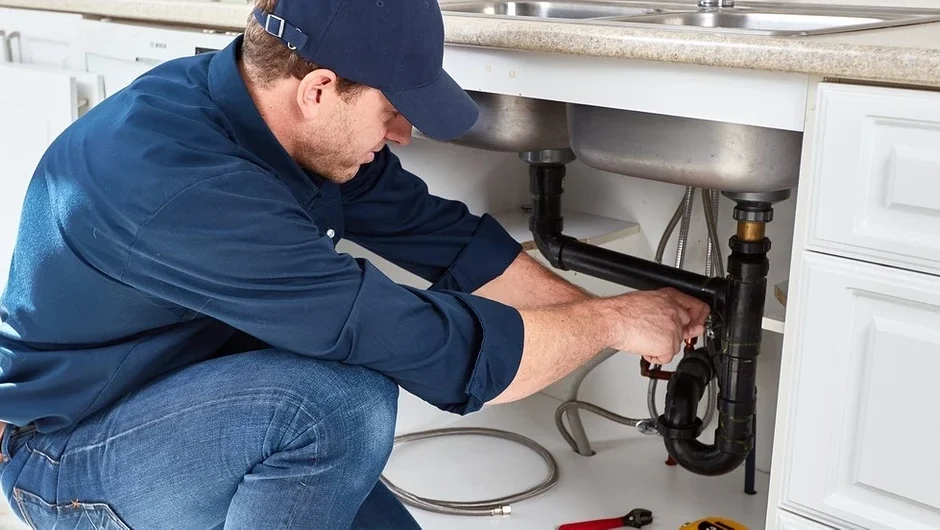The cause of sewer smell can be a mistake in the installation of the system, blockages, and improper ventilation. We tell you how to fix these problems.
An unpleasant odor in the house is a sure sign that something is wrong with the sewer system. And it’s good if this is a sign of a local breakdown that can be easily fixed. The smell may also indicate an incorrect design of the discharge pipelines, which can only be corrected by completely re-laying them. Let’s find out why the house smells like sewage and how to deal with it.
Causes of odor
The appearance of a stench in the rooms is always an extremely unpleasant surprise. There may be several reasons for this phenomenon.
Mistakes in system design and installation
Most often, the problem arises when communications are designed or carried out with mistakes. This may be an incorrectly selected pipe diameter; a ladder with a water seal height lower than calculated in the project; incorrect slope of the pipeline, which leads to stagnation of water or its reverse flow and entry into the siphon and, consequently, to an unpleasant odor. A possible way to eliminate such errors is to dismantle the old system and assemble a new one, or in some cases, replace problematic components.
So, if the required diameter of the pipes or the slope of the pipelines is not maintained (2-3 cm per 1 m of length), there is a risk of blockages in excessively flat areas, but if the slope of the pipe is too large, the mass fills the entire section of the pipe. When liquid moves behind it, a vacuum (vacuum) is created, which sucks water out of the water seals in plumbing fixtures. And if there is no water in them, then the fumes from the sewer pipes easily enter the bathroom premises. It becomes clear why the sink and other plumbing fixtures smell like sewage.
A similar failure of the water seal occurs when too much liquid is released at once. Sometimes this can be fixed by moving the connection point of the reset source. For example, the failure of the water seal began to occur after connecting the washing machine drain to the washbasin siphon, which is connected to the drain pipeline by a rather narrow corrugation. If you move the connection point of the washing machine directly to the sewer pipe or the riser, then failure of the water seal in the washbasin can be avoided.
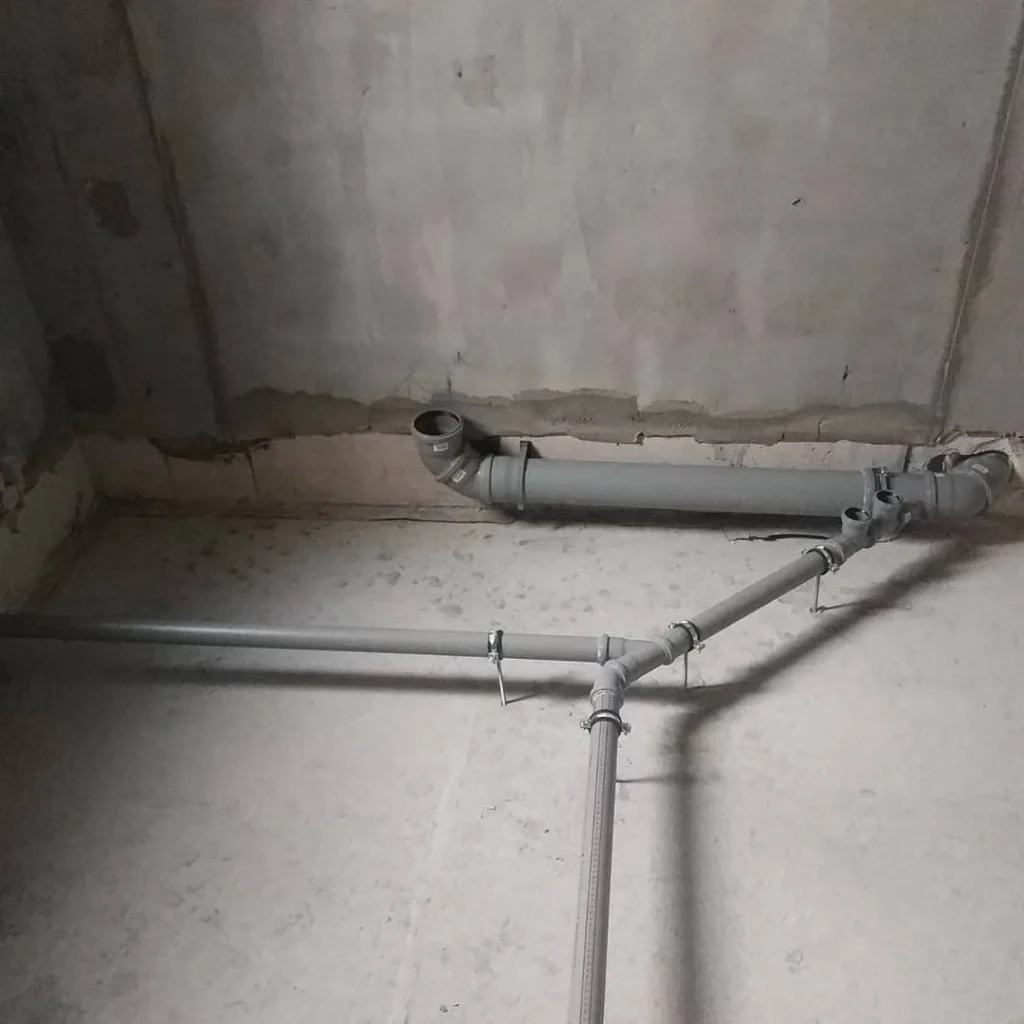

Faulty ventilation
When pumping wastewater in the sewer channel, a vacuum arises, which must be compensated by the flow of air through the drain riser or sewer aerator. Otherwise, the plumbing water seals will fail. Therefore, due to a lack of ventilation or improper operation, the room may stink. Let’s look at the problem in more detail.
When water moves in the riser, the formation of a vacuum is prevented by organizing an airflow from the outside – through a fan pipe (the upper part of the riser, which is discharged to the roof) with a ventilated duct, or through a sewer aerator (non-return valve-air intake) with an unventilated riser. In the latter case, it is also necessary to install a ventilation duct that removes gaseous fermentation products from the house sewage system (septic tank).
If for some reason the outlet openings of the fan riser or ventilation duct become clogged, the normal operation of drainage is also disrupted. If the drain riser is clogged (for example, fallen leaves have gotten into its outlet hole), then the smell will appear periodically when a large amount of water is discharged (for example, from a flush tank). If the outdoor ventilation duct is clogged, the aroma will gradually seep through the water seals.

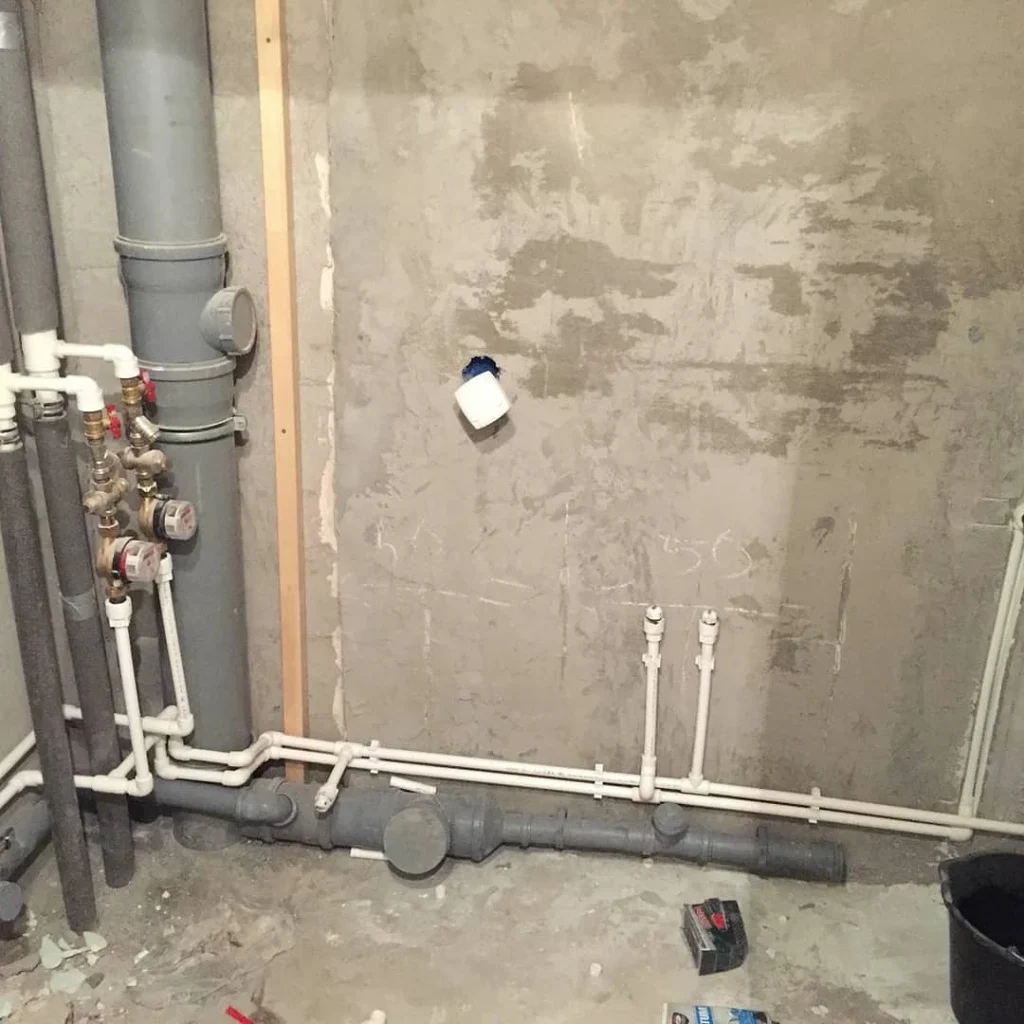
Mistakes in the operation of siphon units
This is one of the common reasons why the toilet smells like sewage. The smell appears due to improper installation and operation of siphons of plumbing fixtures. This is the name of the unit in which a water plug is formed, preventing sewer gases from entering the room.
If water does not flow through the siphon for a long time (several weeks), the liquid in the water seal may evaporate and it will begin to leak odors. Therefore, it is recommended to regularly (1-2 times a month) discharge water through each siphon and drain, or immediately install a unit with a dry seal. Such models usually cost several times more, but they never dry out.
Blockages and leaks
If the pipeline is clogged, the system may not function properly, resulting in a stench. Another reason is the leakage of drains or a violation of the tightness of the connections, from which unpleasant-smelling air leaks out. Restoring normal operation is achieved by clearing the blockage or repairing the leak (replacing the gasket).
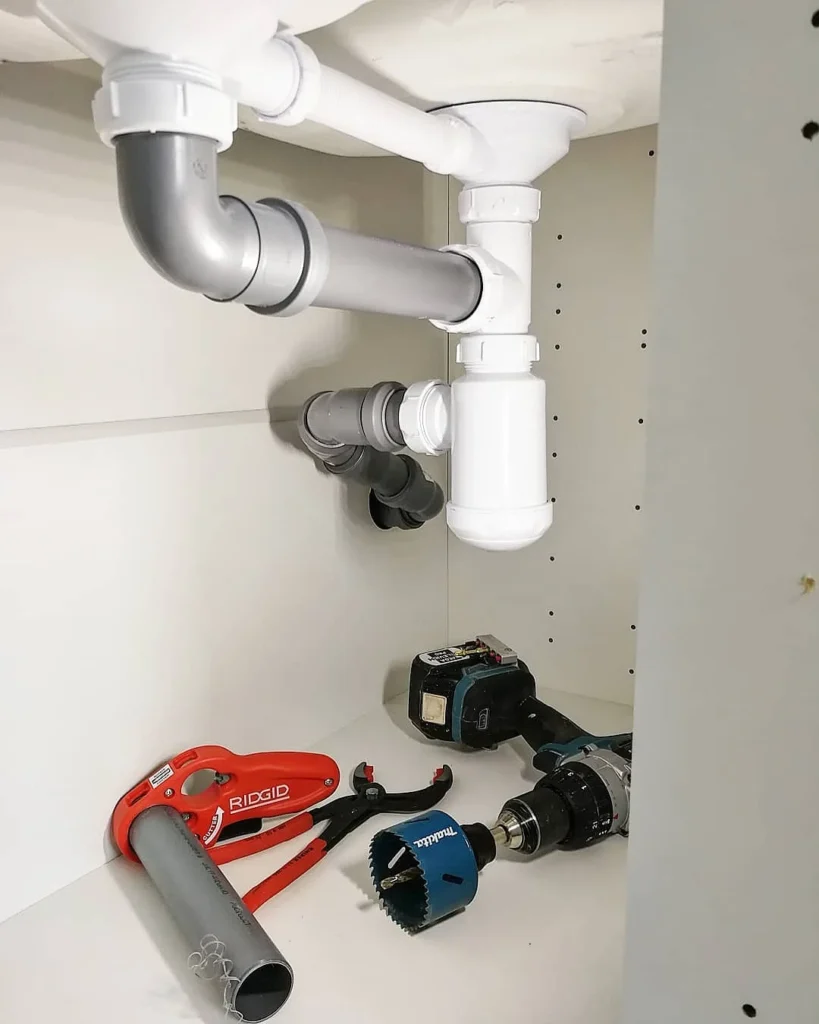

How to eliminate sewer smell in the bathroom, kitchen, toilet
We have looked at the main reasons why there is a sewer smell in the bathroom and other rooms. Almost all of them can be eliminated on your own. Let’s talk about how to do this correctly.
Elimination of design and installation errors
If the stench appears after a major renovation or installation of new communications, it is worth assuming that the problem is due to poor design. Unfortunately, correcting errors in this case is very labor-intensive and expensive. It is necessary to dismantle the communications and reinstall them without any defects. Sometimes partial dismantling and alteration of individual components is “shown.”
So, for example, in the absence of inspection hatches through which inspection and repair of communications are carried out, they are installed in the process of partial dismantling. In more serious cases, it is necessary to redesign the system. If you have no experience in carrying out such work, it is better to entrust it to specialists.

Repair or installation of ventilation
If there is no vent riser, and the house smells unpleasant, it makes sense to consider the possibility of installing one. It is necessary in three cases: for buildings with more than two floors, for autonomous systems in private houses, and sewer risers with a diameter greater than 50 mm. It is advisable to install a structure where one-time large volumes of waste are possible, for example, in the presence of a swimming pool or similar structure.
Already installed ventilation may become clogged during operation. Thus, the channel leading to the roof sometimes becomes clogged with ice, snow, or leaves. Therefore, if the room smells unpleasant, and after flushing the toilet you hear the sharp sounds of water seals breaking, you should make sure there is no blockage. To do this, lower a cable from the roof into the channel and check how freely it passes. If necessary, a clogged shaft can be cleaned from above or through inspection hatches.
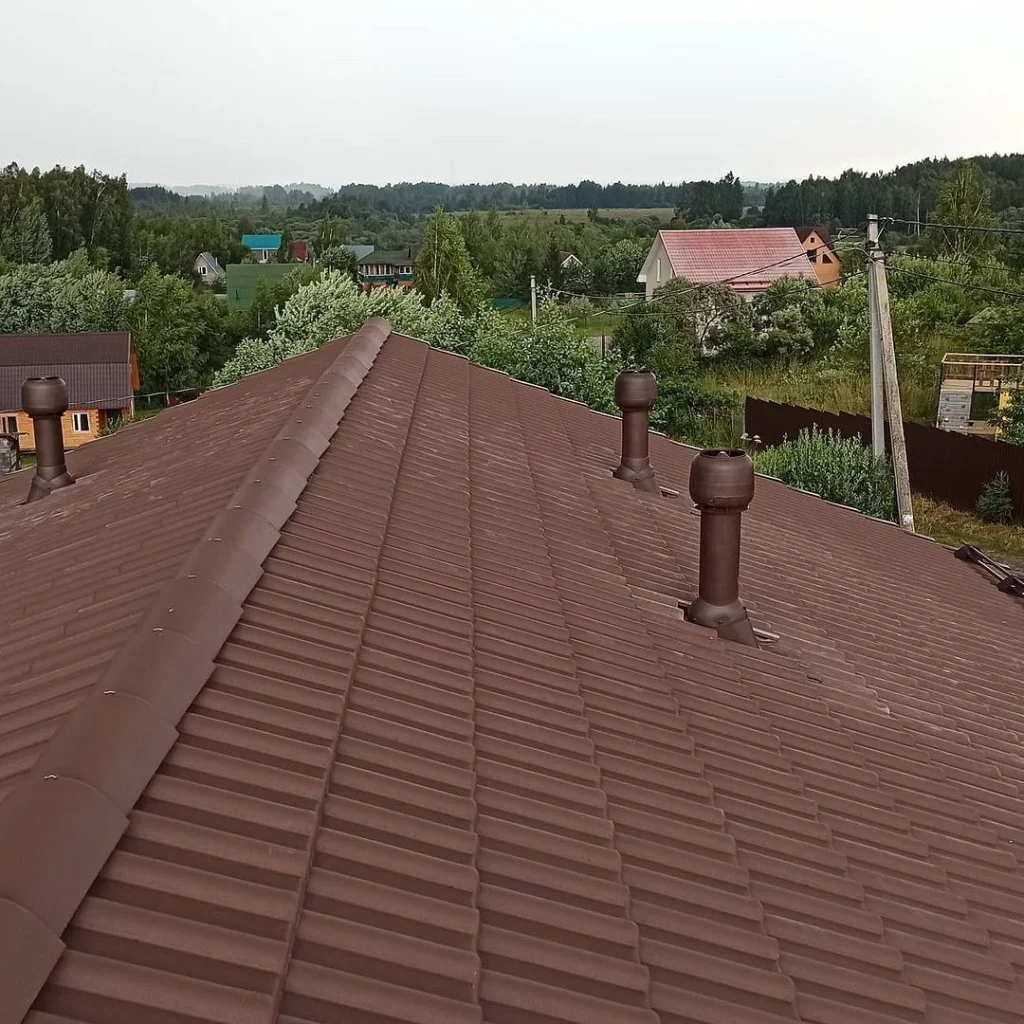

Eliminating blockages and leaks
A clogged pipeline is the most common reason why there is a sewer smell in the bathroom; let’s look at how to get rid of the problem. Contamination of the external surface of communications with poorly soluble household waste (grease, soap, food debris) leads to deposits on the walls. Gradually their number increases. The lumen through which the fluid moves narrows and then becomes clogged. Several methods are used to eliminate deposits.
- Dissolution. The industry produces special chemicals that dissolve blockages, such as “Mole”, “Tiret Turbo”, etc. They are poured into the drain, and after the time specified in the instructions, the dirt plug is dissolved and washed off with plenty of water.
- Pumping with a plunger. This is a device that creates increased pressure in the pipeline. Due to this, the clogged area is cleared or the plug moves further. The plunger is placed on the sink or toilet drain, the overflow holes are closed, and pumping is performed.
- Cleaning with a plumbing cable. Helps to break or pull the cork out. Before you start cleaning, you need to dismantle the siphon assembly.
After removing the blockage, the system begins to work normally, and the room no longer smells.
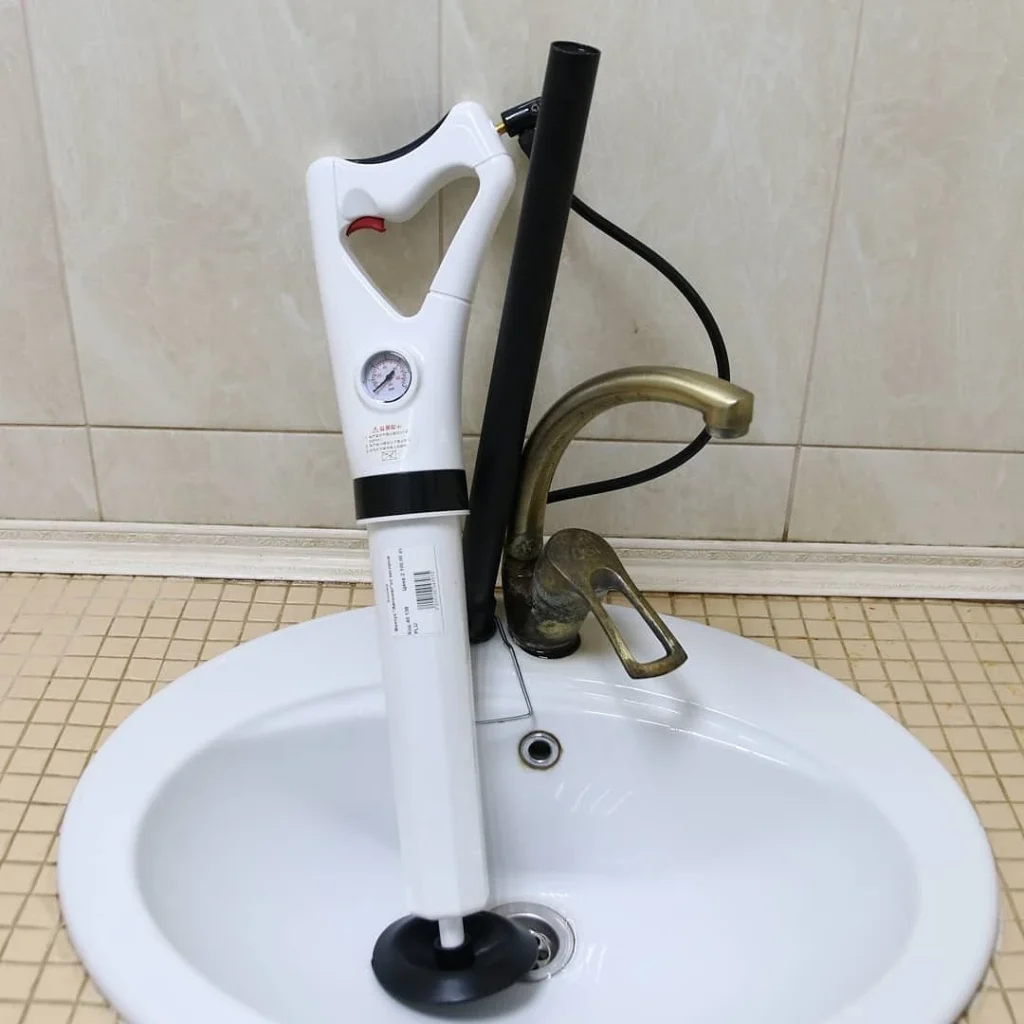

Small leaks, when the liquid leaks slightly or oozes out in a very thin stream, also give off an unpleasant odor. Most often, the problem is a leak in the connections or damage to the pipeline. In the latter case, replacement of the defective element is “indicated”, but repair is also possible. More often than not this is a temporary measure. Small holes are sealed with epoxy resin or cold welding.
Cracks and larger holes are covered with patches of plastic sealing material and glued to the base. To be safe, it is advisable to wrap the repair cloth around the entire defective area. For example, wrap it in a bandage and cover it with epoxy resin. You can apply a patch, put a piece of PVC pipe on top of it for reinforcement, and secure everything with clamps. Such temporary repairs are possible in the bathroom, toilet, or kitchen. Where there is relatively free access to communications.
Preventive measures
- Inspect the ventilation shaft regularly. Cover it with a protective net on top to prevent debris from falling into the channel.
- Place screens on bathroom and kitchen drains to trap food debris and hair. Regularly use chemicals for preventive purposes to flush communications.
- Once every six months, inspect accessible sections of the pipeline for minor leaks. If defects are found, correct them immediately.
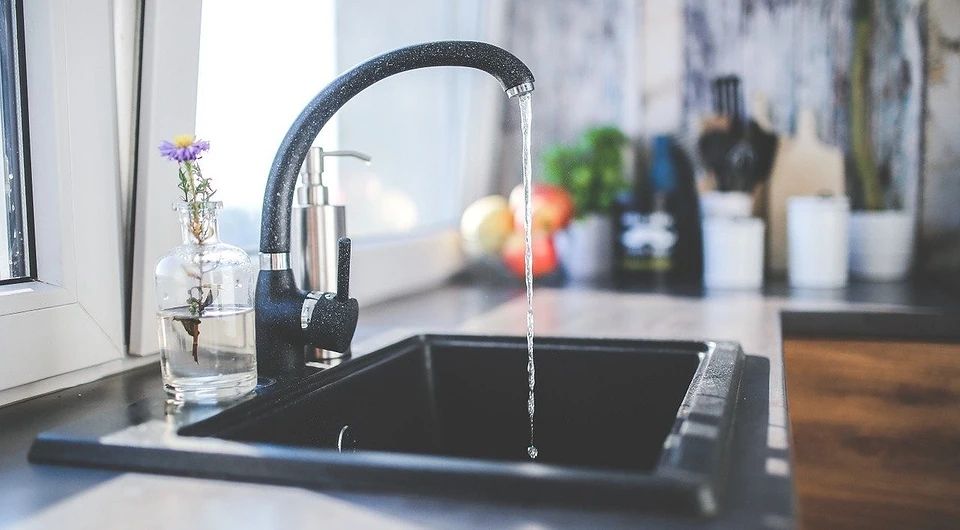
These simple measures will help keep your sewer system in good working order, which will ensure that your home is free of unpleasant odors.

